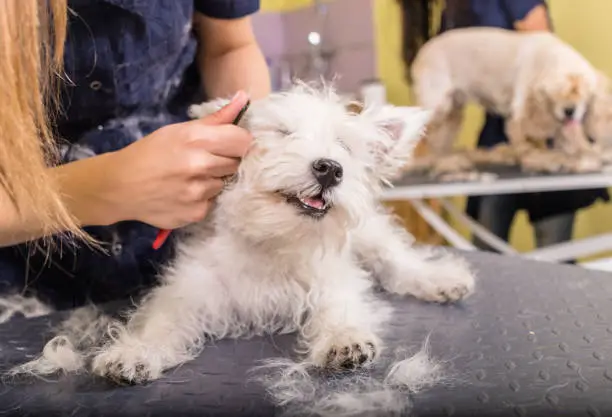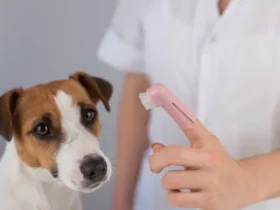Introduction
If you’ve ever owned a dog, you’ve likely noticed the seemingly never-ending cycle of fur that accumulates on your furniture, clothes, and just about every other surface in your home. But have you ever wondered if your dog sheds more in the summer? The answer is yes, but the reasons behind this seasonal shedding and how to manage it are a bit more complex. In this post, we’ll explore the science behind why dogs shed, why it tends to ramp up during the warmer months, and what you can do to keep your home from turning into a fur-covered battlefield.
Why Do Dogs Shed?
Shedding is a natural process for dogs. Their fur, or coat, plays a vital role in regulating their body temperature, protecting their skin, and even offering some level of waterproofing. Just like how humans lose dead skin cells to make way for new ones, dogs shed fur to make room for new, healthy growth.
There are several factors that contribute to how much a dog sheds:
- Breed: Some breeds, like Huskies and Golden Retrievers, are notorious for their heavy shedding due to their thick double coats. Others, like Poodles and Bichon Frises, shed very little.
- Coat Type: Dogs with double coats have an undercoat and an outer coat. The undercoat is usually soft and dense, and this is what tends to shed the most, especially during certain seasons.
- Health: A dog’s health can greatly influence shedding. Nutritional deficiencies, allergies, or medical conditions can cause excessive shedding.
- Environment: The amount of daylight and temperature can affect a dog’s shedding patterns. Dogs that spend more time outdoors may shed more seasonally compared to those who stay indoors most of the time.
The Role of Seasonal Changes
The change of seasons is a significant factor in why dogs shed more at certain times of the year. Here’s how it works:
Spring Shedding
In the spring, as the days get longer and the temperature starts to rise, dogs begin to shed their winter coats. This is known as “blowing coat.” During this time, dogs lose their thick undercoat that kept them warm during the colder months. This is often the heaviest shedding period of the year.
Summer Shedding
While not as intense as the spring shedding, summer shedding is still noticeable. The shedding in summer is generally a continuation of the spring process. Dogs will lose the remainder of their winter coat and thin out their fur to stay cool during the hotter months.
Fall Shedding
In the fall, the process reverses. Dogs shed their lighter summer coats to make way for a thicker winter coat. This is another period of heavy shedding.
Winter Shedding
Winter shedding is typically minimal as dogs retain most of their coat to stay warm. However, indoor dogs that are exposed to artificial light and consistent temperatures may not follow this traditional pattern and could shed lightly year-round.
Do All Dogs Shed More in the Summer?
Not all dogs shed the same amount, even in the summer. The extent of shedding can vary widely depending on the breed, coat type, and individual dog.
- Double-Coated Breeds: Dogs with double coats, like German Shepherds, Labradors, and Shiba Inus, are likely to shed more in the summer. These breeds have a thick undercoat that they naturally shed in preparation for the warmer months.
- Single-Coated Breeds: Breeds with single coats, such as Boxers or Greyhounds, tend to shed less and may not have a noticeable increase in shedding during the summer.
- Non-Shedding Breeds: Some breeds are known as “non-shedding,” but this is a bit of a misnomer. Breeds like Poodles and Maltese do shed, but their hair is more like human hair and grows continuously, so it doesn’t fall out as frequently.
How to Manage Shedding in the Summer
Managing shedding is all about regular grooming and proper care. Here are some expert tips to help you navigate the fur tornado:
1. Regular Brushing
Brushing is your best defense against shedding. Regular brushing helps remove loose fur before it ends up all over your house.
- For Double-Coated Breeds: Use an undercoat rake or a de-shedding tool to get deep into the coat and remove loose fur.
- For Single-Coated Breeds: A slicker brush or a bristle brush is usually sufficient to remove loose hair.
Aim to brush your dog at least once a week, but during peak shedding seasons, daily brushing may be necessary.
2. Bathing
Bathing can help remove loose fur, dirt, and debris from your dog’s coat. However, don’t overdo it—bathing too frequently can strip your dog’s coat of natural oils, leading to dry skin and more shedding.
- Frequency: A bath every 4-6 weeks is generally sufficient. During heavy shedding periods, you can increase the frequency slightly.
- Shampoo: Use a dog-specific shampoo that suits your dog’s coat type. There are shampoos available that help reduce shedding by strengthening the coat.
3. Diet and Nutrition
A healthy diet plays a crucial role in maintaining a healthy coat. Make sure your dog is getting a balanced diet with the right amount of protein, omega fatty acids, and vitamins.
- Omega-3 and Omega-6 Fatty Acids: These help to promote a healthy, shiny coat and can reduce shedding.
- High-Quality Protein: A diet rich in quality protein supports overall skin and coat health.
If you’re concerned about your dog’s diet, consult your vet to ensure they’re getting all the nutrients they need.
4. Hydration
Keeping your dog well-hydrated can help maintain their skin and coat health, which in turn can reduce shedding. Make sure your dog always has access to fresh water, especially during the hot summer months.
5. Regular Vet Visits
Regular check-ups with your vet can help catch any underlying health issues that could be contributing to excessive shedding. Conditions like skin infections, allergies, or hormonal imbalances can all cause increased shedding.
6. Keeping Your Home Clean
Even with the best grooming routine, some fur will inevitably end up in your home. Here are some tips to keep it under control:
- Vacuum Regularly: Use a vacuum with a pet hair attachment to remove fur from carpets, furniture, and other surfaces.
- Lint Rollers and Sticky Tape: Keep these handy for quick clean-ups on clothes and furniture.
- Wash Pet Bedding Frequently: Your dog’s bed can become a fur magnet, so make sure to wash it regularly.
When to Be Concerned About Shedding
While shedding is a normal process, there are times when excessive shedding can be a sign of something more serious. If you notice any of the following, it’s time to consult your vet:
- Bald Spots: If your dog is losing fur in patches or developing bald spots, it could be a sign of a skin infection, parasites, or an allergic reaction.
- Dry, Itchy Skin: Excessive scratching, biting, or licking, along with increased shedding, can indicate a skin condition or allergies.
- Changes in Behavior or Appetite: If your dog seems lethargic, has a loss of appetite, or shows other changes in behavior along with shedding, it could be a sign of an underlying health issue.
Conclusion
Yes, dogs do tend to shed more in the summer, especially if they have a double coat. Understanding why this happens and how to manage it can make the fur tornado more bearable. Regular grooming, a balanced diet, and a healthy lifestyle are key to keeping your dog’s coat in top condition and minimizing shedding. Remember, while shedding is a normal part of your dog’s life, excessive shedding should be monitored and, if necessary, discussed with your vet.
With the right care, you can keep your dog comfortable and your home relatively fur-free, even during the peak shedding seasons.











Leave a Reply